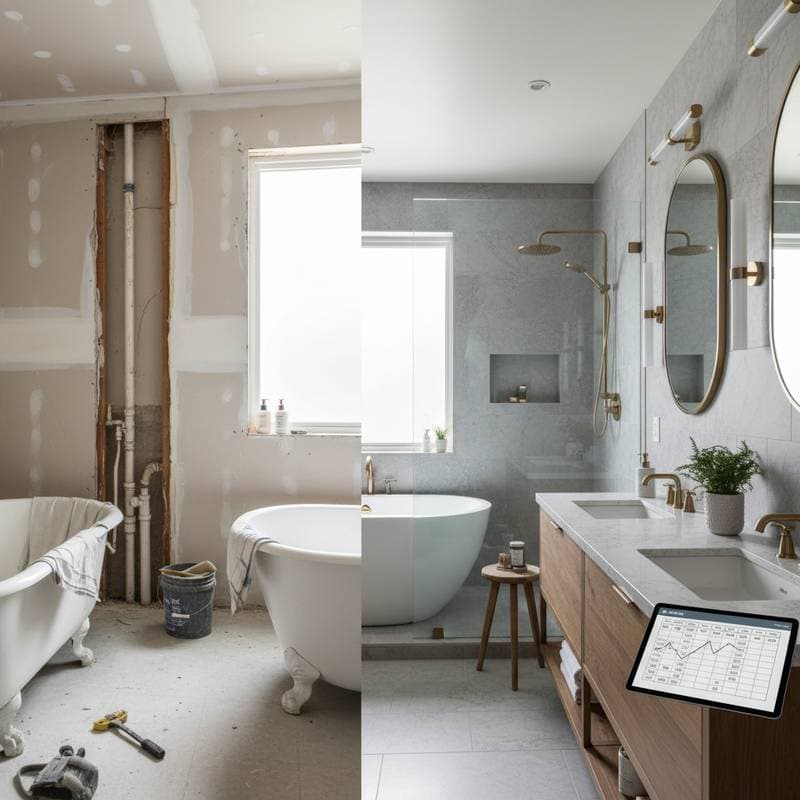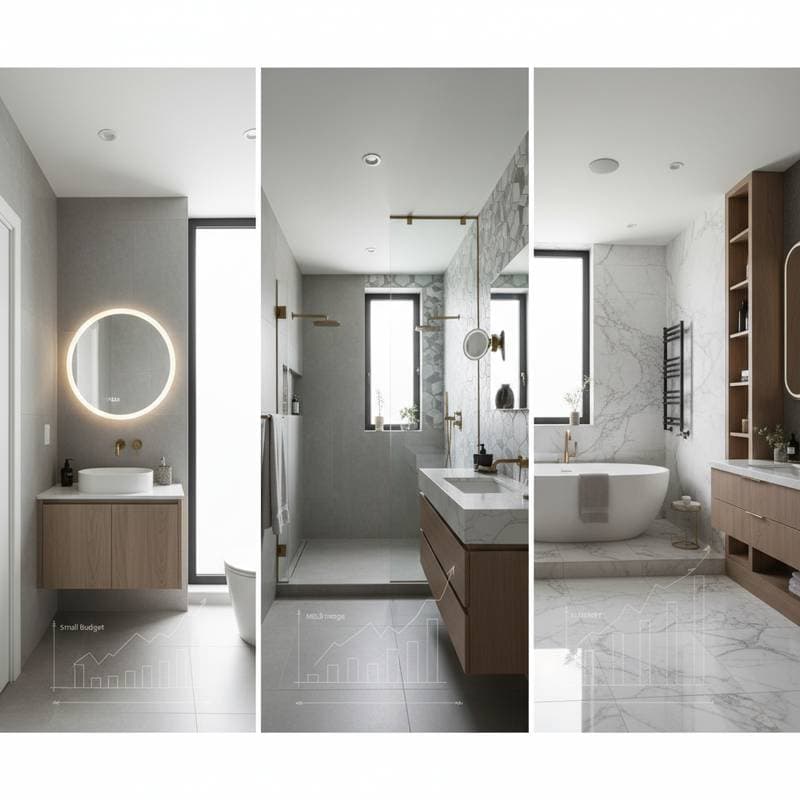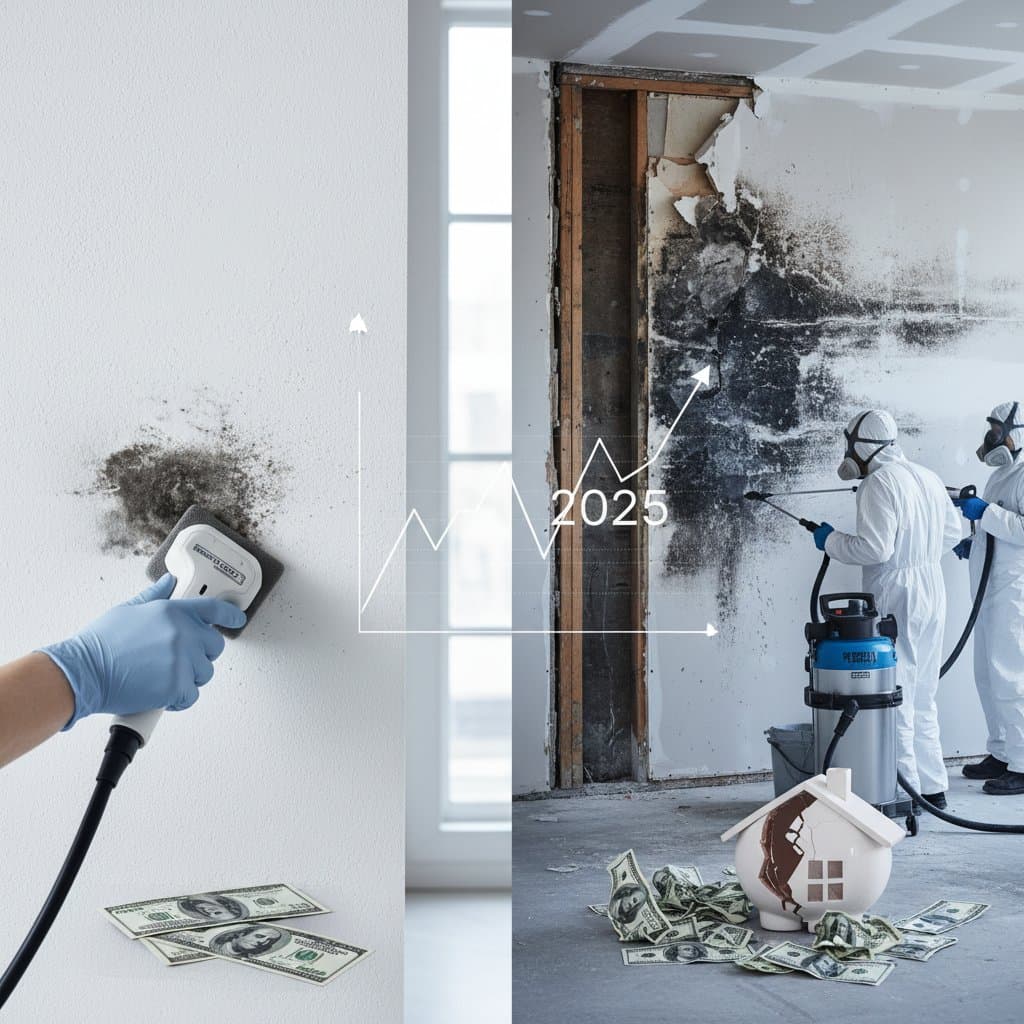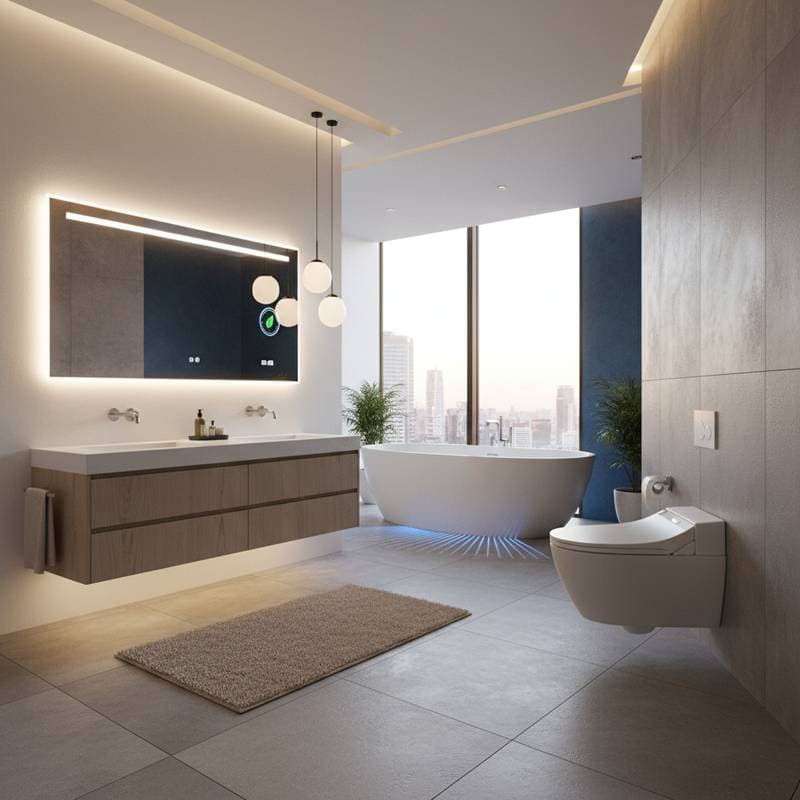The Real Costs of Remodeling Your Bathroom in 2025
A bathroom remodel transforms daily life by enhancing comfort and functionality while increasing property value. Homeowners often underestimate expenses, leading to budget overruns. This guide provides a clear overview of 2025 costs, influenced by material selections, labor demands, and design decisions, to help you establish a solid financial plan.
Understanding the Average Cost Range
Bathroom projects divide into three main tiers: cosmetic refreshes, mid-range renovations, and luxury overhauls. Cosmetic refreshes involve updating paint, hardware, and lighting, with costs starting at $3,000 to $7,000 for a standard 50-square-foot space and rising to $8,000 for larger areas. Mid-range projects, featuring new flooring, vanities, and basic plumbing adjustments, typically run $10,000 to $25,000. Luxury renovations with custom features and structural expansions surpass $50,000, often reaching $75,000 or more in high-end markets.
Labor comprises roughly 50 percent of the total budget. Professionals in plumbing, electrical, and tiling ensure compliance and quality. Materials contribute the remaining share, with premium choices like imported stone or designer fixtures inflating prices substantially.
Key Factors Influencing Pricing
Costs fluctuate based on unique project elements. Consider these primary drivers:
-
Bathroom Size
Square footage directly impacts material quantities and labor time. A 100-square-foot bathroom demands twice the tile and fixtures of a compact 50-square-foot one, potentially adding $5,000 or more to the estimate. -
Plumbing and Layout Modifications
Retaining the current layout minimizes expenses. Relocating fixtures such as toilets or showers involves extensive pipe work, increasing costs by $2,000 to $10,000. As a contractor shared on Reddit, every fixture relocation extends labor hours and elevates expenses. -
Material Quality Levels
Budget-friendly porcelain tiles offer longevity at $5 to $10 per square foot, whereas marble or quartz surfaces command $15 to $30 per square foot for a sophisticated look. Opting for mid-level options delivers durability without excessive spending. -
Permits and Inspections
Structural or system alterations necessitate local permits, costing $200 to $1,500 depending on the municipality. Electrical and plumbing changes trigger mandatory inspections to verify safety standards. -
Regional Labor Variations
Rates differ by location; coastal cities charge $100 to $150 per hour for skilled trades, compared to $75 to $100 in rural areas, reflecting higher living costs and demand.
Detailed Cost Breakdown for a Mid-Range Project
For a typical 60-square-foot mid-range remodel totaling $15,000 to $20,000, expenses distribute as follows:
- Demolition and Disposal: 5 to 10 percent ($750 to $2,000), covering removal of old fixtures and safe waste haul-away.
- Plumbing and Electrical Updates: 20 to 30 percent ($3,000 to $6,000), including pipe rerouting and wiring for new outlets or lights.
- Fixtures and Fittings: 15 to 25 percent ($2,250 to $5,000), such as toilets, showers, and faucets in standard finishes.
- Tile and Flooring: 15 to 20 percent ($2,250 to $4,000), using ceramic or vinyl plank options.
- Cabinetry and Countertops: 10 to 15 percent ($1,500 to $3,000), with stock vanities and laminate surfaces.
- Painting and Finishing Touches: 5 percent ($750 to $1,000), for walls, trim, and minor detailing.
- Design Consultation and Permits: 5 to 10 percent ($750 to $2,000), encompassing planning fees and regulatory approvals.
Adjust allocations by prioritizing essentials like waterproofing over decorative elements to fit tighter budgets.
Deciding Between DIY and Professional Services
Homeowners can cut costs by 10 to 20 percent through self-managed tasks like painting or demolition, provided they possess basic skills and tools. However, plumbing and electrical work demands licensed experts to avoid code violations and hazards. Improper installations risk leaks or fires, resulting in repair bills exceeding initial savings.
A balanced hybrid model works well: handle simple prep work yourself, then engage contractors for specialized installations. This approach maintains quality while controlling expenditures. Always verify contractor credentials through local licensing boards.
Project Timelines and Complexity
Cosmetic updates complete in 1 to 2 weeks, allowing quick disruptions. Full renovations span 4 to 8 weeks, factoring in material lead times and contractor availability. Complexity rises with layout shifts or moisture barriers, potentially adding 1 to 2 weeks for custom milling or inspections.
Build in buffer time for surprises, such as hidden mold or outdated wiring uncovered during demo. Clear communication with your team helps mitigate delays and keeps the project on track.
Effective Budgeting Strategies
Start with a detailed budget covering all categories plus a 10 to 15 percent contingency for unforeseen issues like subfloor rot. Quora experts emphasize this buffer to handle discoveries post-demolition without halting progress.
Implement these cost-management tactics:
- Preserve Existing Elements: Refinish tubs or reuse cabinets to slash replacement fees by up to 30 percent.
- Research Suppliers Thoroughly: Source deals from home centers or online vendors; seasonal promotions can reduce fixture prices by 20 percent.
- Select Balanced Fixtures: Mid-tier models offer reliable performance and style at half the luxury price point.
- Solicit Multiple Bids: Obtain three itemized quotes to negotiate better rates and spot inclusions others overlook.
- Coordinate Deliveries Ahead: Order tiles and hardware early to prevent idle labor days that inflate hourly charges.
Safeguarding Against Long-Term Problems
Invest in robust features like vapor barriers and exhaust systems to combat humidity and mold. Select grout sealers and ventilation-rated fans for sustained performance. Subpar choices lead to repairs costing thousands within five years.
Choose contractors with verified portfolios, insurance, and warranties. Demand written contracts outlining scopes, timelines, and change-order processes to protect your investment.
Sustaining Your Remodeled Space
Regular upkeep preserves the remodel's integrity. Wipe grout weekly with mild solutions to avert buildup, inspect seals quarterly for wear, and operate fans during showers to manage moisture. Gentle cleaning routines extend fixture lifespans and maintain aesthetic appeal.
A thoughtfully executed bathroom remodel delivers enduring comfort and equity growth. By focusing on quality planning and informed decisions, you secure a space that serves your needs for years ahead.





